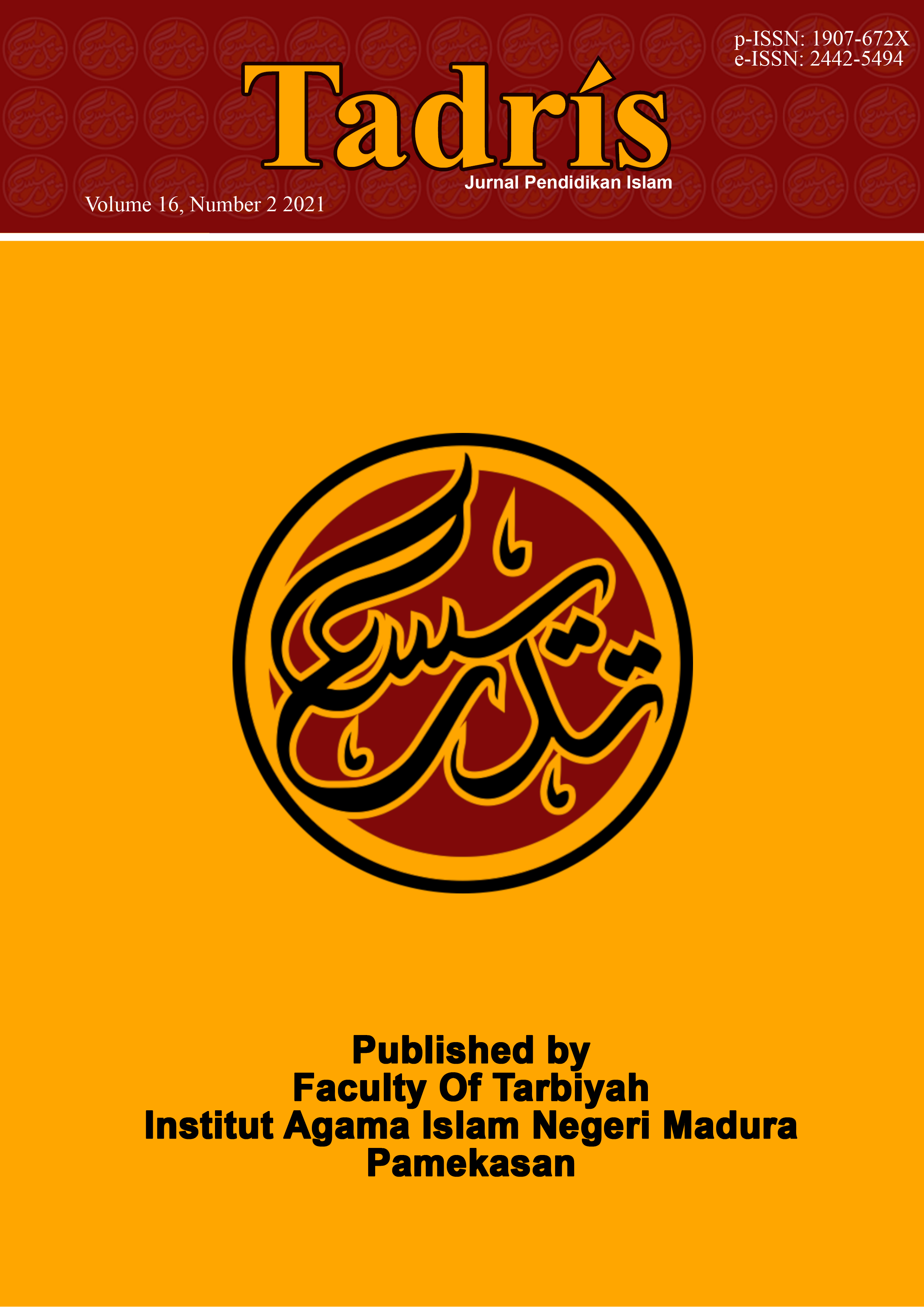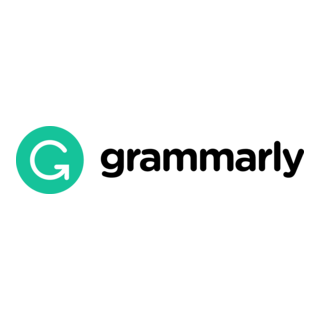Islamic Boarding School as a Medium For Creating a Positive Image at SMK Darussalam Karangpucung Cilacap
 Abstract views: 191
,
Abstract views: 191
,
 PDF downloads: 199
PDF downloads: 199
Abstract
This research is a type of phenomenological research aimed at describing the position and role of the Darussalam pesantren as a medium for creating a positive image of SMK Darussalam Karangpucung Cilacap. The data in this study were collected using interview, observation and documentation techniques. After the data was collected, data analysis was carried out using the data analysis technique of the Miles and Huberman model consisting of data reduction, data presentation, and verification. The results showed that there were five roles played by Darussalam pesantren when carrying out its function as a social media for SMK Darussalam which was used to create a positive image of SMK. First, pesantren Darussalam was involved in implementing habituation activities at SMK. Second, the pesantren Darussalam has a role to produce alumni of SMK Darussalam who have the ability to preach in the community. Third, the Darussalam pesantren is believed to be the organizer of religious activities at SMK Darussalam. Fourth, the Darussalam pesantren was involved by the SMK in activities that were attended by the student's guardians. Fifth, the Darussalam pesantren was given facilities by the SMK to organize religious activities for the communities around the SMK. The five roles of pesantren as media have been successfully played so as to create a positive image of SMK Darussalam in the eyes of the public. The implication of creating a positive image is that there is always an increase in the acquisition of the number of new students at SMK Darussalam. The main factor that supports the success of the pesantren is due to the harmonious relationship between the pesantren and SMK and the community. This has shown a relationship between Islam, the media and society.
Downloads
References
Bakti, Andi Faisal, dan Venny Eka Meidasari. “Trendsetter komunikasi di era digital: tantangan dan peluang pendidikan komunikasi dan penyiaran Islam.” Jurnal Komunikasi Islam 4, no. 1 (2014). https://doi.org/10.15642/jki.2014.4.1.%25p.
Chotimah, Chusnul. “Strategi Public Relations Pesantren Sidogiri dalam Membangun Citra Lembaga Pendidikan Islam.” ISLAMICA: Jurnal Studi Keislaman 7, no. 1 (2012): 186–210. https://doi.org/10.15642/islamica.2012.7.1.186-210.
Dardiri, Ahmad. “Optimalisasi Kerjasama Praktik Kerja Industri untuk Meningkatkan Citra Sekolah dan Daya Saing Lulusan SMK.” Jurnal Pendidikan dan Pembelajaran (JPP) 22, no. 2 (2016): 162–68. http://journal.um.ac.id/index.php/pendidikan-dan-pembelajaran/article/view/7742.
Fatoni, Syamsul. “Violence Eradication in Education Through a Juridical-Religious Approach: Seeking an Ideal Model Under the Criminal Justice System.” Al-Risalah 20, no. 1 (2020): 87. https://doi.org/10.30631/al-risalah.v20i1.319.
Fikri, Fikri. “Transformasi nilai al-islah terhadap keberagaman konflik: epistemologi hukum Islam dalam Al-Qur’an.” Al-Risalah 16, no. 02 (2018): 201–16. https://doi.org/10.30631/al-risalah.v16i02.308.
Hamudy, Nurul Annisa, dan Moh Ilham A Hamudy. “Cak Nur on Politics: Indonesian Political Islam and the Role of Islamic Politics.” Al-Risalah 20, no. 1 (2020): 97–113. https://doi.org/10.30631/al-risalah.v20i1.554.
Harjanto, Rudy, dan Deddy Mulyana. “Komunikasi Getok Tular Pengantar Popularitas Merek.” Mediator: Jurnal Komunikasi 9, no. 2 (2008): 233–42. https://doi.org/10.29313/mediator.v9i2.1131.
Hartati, Hartati. “Peran Serta Masyarakat dalam Meningkatkan Kualitas Lingkungan Daerah Aliran Sungai Batanghari di Desa Sungai Duren.” Al-Risalah 18, no. 1 (2018): 13–28. https://doi.org/10.30631/al-risalah.v18i2.132.
Ikhwan, Afiful. “Penerapan Manajemen Hubungan Sekolah dan Masyarakat dalam Perspektif Islam.” Al-Hayat: Journal of Islamic Education 2, no. 1 (2018): 1–16. https://alhayat.or.id/index.php/alhayat/article/view/19.
Juliyana, Eva, dan Cut Alma Nuraflah. “Peranan Internet dalam Meningkatkan Citra SMA Swasta Budi Agung Medan.” Network Media:Jurnal Ilmu Komunikasi 3, no. 1 (2020): 11–21. 10.46576/jnm.v3i1.863.
Longenecker, Clinton O, dan Sonny S Ariss. “Creating competitive advantage through effective management education.” Journal of Management Development, 2002. https://doi.org/10.1108/02621710210441649.
Maamarah, Siti, dan Supramono Supramono. “Strategi Peningkatan Mutu Dan Citra (Image) Sekolah Dasar Negeri Di Ungaran, Semarang.” Kelola: Jurnal Manajemen Pendidikan 3, no. 1 (2016): 115–30. https://doi.org/10.24246/j.jk.2016.v3.i1.p115-130.
Masood, Tariq, dan Paul Sonntag. “Industry 4.0: Adoption challenges and benefits for SMEs.” Computers in Industry 121 (2020): 103261. https://doi.org/10.1016/j.compind.2020.103261.
Miotto, Giorgia, Cristina Del-Castillo-Feito, dan Alicia Blanco-González. “Reputation and legitimacy: Key factors for Higher Education Institutions’ sustained competitive advantage.” Journal of Business Research 112 (2020): 342–53. https://doi.org/10.1016/j.jbusres.2019.11.076.
Moleong, Lexy J. Metodologi Penelitian Kualitatif. Bandung: Remaja Rosdakarya, 2010.
Nord, Jeretta Horn, Joanna Paliszkiewicz, dan Alex Koohang. “Using social technologies for competitive advantage: impact on organizations and higher education.” Journal of computer information systems 55, no. 1 (2014): 92–104. https://doi.org/10.1080/08874417.2014.11645744.
Sugiyono. Metode Penelitian Kuantitatif, Kualitatif, dan R&D. Bandung: Alfabeta, 2010.
Udin, Muhammad Diak, dan Abdul Muhid. “Komunikasi Getok Tular dan Metode Dakwah Hizbut Tahrir Indonesia.” Jurnal Komunikasi Islam 8, no. 2 (2018): 239–74. https://doi.org/10.15642/jki.2018.8.2.239-274.
Wiyani, N. A. Manajemen Humas di Sekolah. Yogyakarta: Gavamedia, 2019.
Copyright (c) 2021 TADRIS: Jurnal Pendidikan Islam

This work is licensed under a Creative Commons Attribution-NonCommercial 4.0 International License.
The journal operates an Open Access policy under a Creative Commons Non-Commercial 4.0 International license. Authors who publish with this journal agree to the following terms:
- Authors retain copyright and grant the journal right of first publication with the work simultaneously licensed under a
 Commons Attribution-NonCommercial 4.0 International License
Commons Attribution-NonCommercial 4.0 International Licensethat allows others to share — copy and redistribute the material in any medium or format, and adapt — remix, transform, and build upon the material.
- Authors are able to enter into separate, additional contractual arrangements for the non-exclusive distribution of the journal's published version of the work (e.g., post it to an institutional repository or publish it in a book), with an acknowledgement of its initial publication in this journal.
- Authors are permitted and encouraged to post their work online (e.g., in institutional repositories or on their website) prior to and during the submission process, as it can lead to productive exchanges, as well as earlier and greater citation of published work (see The Effect of Open Access).














